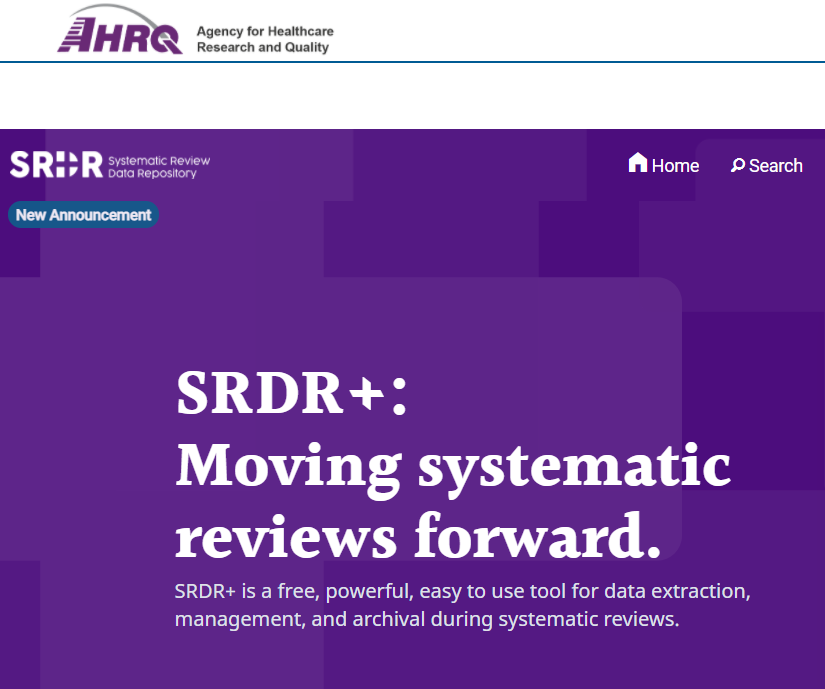Data Extraction in Systematic Reviews: Navigating SRDR+
Data Extraction in Systematic Reviews and Scoping Reviews
Data extraction is a central part of carrying out a systematic review or scoping review. It’s one of the key features that sets a systematic review off from a traditional narrative review.
Instead of viewing a research article as a source of answers, you approach a research article as a source of information. Your job is to get that information out of the research article and into a data table where the information from the article (along with similar information from other articles on the same topic) can be analyzed.
In order to do this in a systematic and efficient way, you need to use a data extraction template.
The focus of this resource is on one such resource: the Systematic Review Data Repository (or SRDR+).

SRDR+ is a free online platform that will help you (and your team, if you are working with others) organize and carry out the data extraction necessary to carry out a systematic review.
In the following pages, we’ll walk you step-by-step through everything from setting up your project in SRDR+ to downloading the information you’ll use for analysis.
Of course, data extraction is only one step in the systematic review process. If you’ve never carried out a systematic review before, we encourage you to visit the Brown University Evidence Synthesis Academy web page for a series of short tutorials on carrying out a systematic review. For additional information on data extraction, see also the module in the Evidence Synthesis Academy: Why Extract Data?